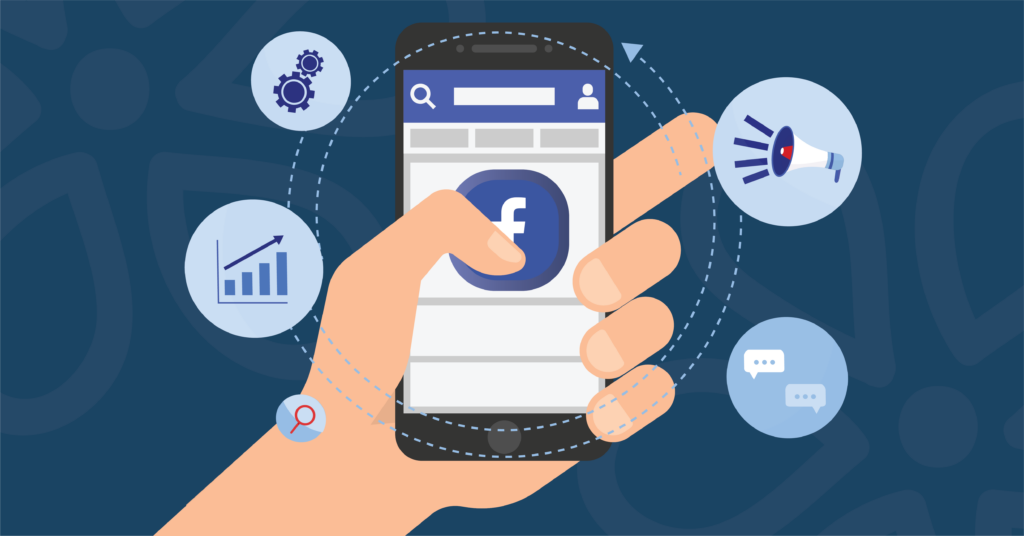Struggling to get noticed by your target audience on social media? Discover how to increase brand awareness and engagement with proven social media tactics.
Brand awareness measures how well your target audience recognizes and recalls your brand identity. Brand awareness is born from the visual, verbal, and emotional elements that define your brand.
Having high brand awareness reflects your brand’s ability to leave a lasting impression on the right audience. Brand recognition creates trust and loyalty among your customers, which leads to a positive purchasing preference for your offerings. Brand awareness extends beyond knowing your company’s name or recognizing its logo. True brand awareness means your audience understands your brand’s values, offerings, and unique position in the market – your full brand identity. Building a cohesive brand identity is the foundation of brand awareness. A strong identity distinguishes your brand from competitors.
We will teach you some techniques to boost brand awareness with your social media marketing strategies. Our powerful, actionable, measurable strategies can help your brand excel, but first, here’s a quick note on why you should focus on online brand awareness.
Why Does Brand Awareness Matter Online?
Brand awareness is foundational for successful digital marketing campaigns. Since consumers are constantly bombarded with content, a recognizable and reputable brand stands out and encourages your audience to choose your products or services over competitors. When you compete for every click, like, and share, building brand awareness can help improve the impact of your marketing campaigns.
This is especially true for social media efforts. As audiences read and engage with your content on social media platforms, a memorable brand voice is instrumental in creating lasting impressions and cultivating a loyal online community.
Social Media and Brand Exposure
Social media provides unique opportunities for businesses to create strong brand awareness. Crafting a unique profile and posting high-quality content is the first step. Leveraging each platform’s unique features and algorithms can further your brand identity.
From compelling narratives to visually engaging content, social media channels allow brands to showcase their personality and connect with their audience personally. The interactive nature of these platforms enables real-time engagement, turning brand exposure into meaningful conversations.
Now, let’s explore actionable strategies you can use to help your brand not just be seen but remembered. Up first: how content marketing develops brand recognition through a consistent brand message, voice, and image.
Consistency in Content Marketing
Content marketing is the backbone of brand awareness campaigns. Content provides valuable and relevant information that resonates with your target audience. At the same time, social media platforms act as distribution channels to ensure that your content reaches a wide and diverse audience. When you align your content with your brand identity and each social media platform’s specific characteristics and preferences, you have a powerful tool for amplifying brand recognition and increasing brand awareness.
To maximize the impact of your brand awareness efforts, make sure you create content that is informative, shareable, and talks about your brand values. The types of content you choose should align with your brand’s message while being inherently shareable to encourage social media users to become advocates. Incorporate different content formats, like video content, images, infographics, podcasts, and blogs, into your social media posts. Remember – consistency in brand messaging across content reinforces your brand’s identity and message.
Leveraging Influencer Marketing
Influencers offer a direct conduit to new audiences with their established social media presence and engaged follower bases. When you align your brand identity with influencers who resonate with your target demographic, you leverage their authenticity and trust, quickly introducing your products or services to a receptive audience. This type of partnership increases your brand’s visibility and positions it in the context of an influencer’s lifestyle or niche, helping to make a more meaningful connection with potential customers.
Influencers also often serve as thought leaders within their niches, providing a unique opportunity for your brand to be associated with trending topics and industry discussions. Their ability to stay abreast of the latest trends and share relevant insights can help you stay part of current and relevant conversations, enhancing your overall brand awareness strategy.
Influencers can act as a powerful referral source, directing their followers to your brand and becoming advocates who vouch for your quality. This credibility can help combat information overload for your audience.
Engaging Audiences with Hashtags and Interactive Content
From polls and quizzes to user-generated content, interactive content helps catalyze audience participation. Audiences, like students, learn best with hands-on learning. Inviting your audience to engage with your brand actively enhances their experience and creates memorable touchpoints that increase brand recall.
Similarly, when you use hashtags strategically, you can create digital connectors for your audience. Incorporating relevant and catchy hashtags into your content can increase discoverability and help establish a cohesive online community. When you encourage users to participate in hashtag campaigns or challenges, there’s a sense of belonging and community around your brand. This shared experience can amplify visibility and brand awareness and cultivate a loyal audience base that identifies with your project’s values and ethos.
Giveaways and contests are equally powerful tools. Creating enticing incentives for participation attracts new audiences and deepens your connection with existing followers. Contests generate a buzz around your brand, encouraging users to share and engage, organically expanding your reach.
Maximizing Reach with Paid Social Media Advertising
As you build a focused social media content library, known as owned media, it is common for your audience to start creating user-generated content that reflects their relationship to your brand. User-generated content, known as earned media, signals that your messaging resonates with your audience. The third type of media is paid media. Paid media is advertising you pay to place in front of your audience, and it is a powerful ally in building brand awareness.
Paid advertising options range from sponsored TikToks to video ads between tweets. Each option offers customizable templates to make compelling campaigns. The diverse ad types cater to specific audience preferences, allowing your content to resonate with the right audience. Platforms like TikTok and LinkedIn, each with its unique user base, allow businesses to showcase their brand to specific demographics. The targeted reach facilitated by paid social media advertising can significantly boost brand visibility on social platforms and search engines, making the brand stand out among the digital noise and enabling it to compete effectively in the online marketplace.
Paid social media advertising helps create a level playing field for small businesses to compete with larger counterparts. A well-designed paid ad campaign can allow a small business to target its ideal audience with affordable precision. Each platform offers free analytics tools that enable businesses to measure the performance of their campaigns. The pinpointed focus of paid advertisements, whether in the form of eye-catching Instagram stories or attention-grabbing LinkedIn-sponsored content, ensures that your brand’s message captures the audience’s attention. With that attention, you can boost brand awareness, enhance audience engagement, and establish a formidable online presence within your niche.
Measuring Brand Awareness
We’ve covered strategies for brand building on social media platforms. But how do you measure their success? Here are a few methods you can use to measure brand awareness.
1. Use Analytics Tools: Analytics tools can help you quantify the impact of your brand awareness campaigns. Apply them to track metrics like website traffic, click-through rates, and conversion rates to assess the effectiveness of your marketing efforts on your social media presence.
2. Track Subscribers and Followers: Growth in subscribers and followers on your social media accounts is a tangible indicator of increasing brand awareness and is easy to track across channels. Effective social media management tools help you monitor your followers over time, checking the count after each marketing campaign.
3. Employ Social Listening: Real-time monitoring of social media conversations using social listening tools lets you see how your brand is discussed online to gauge your brand image with different demographics. Social listening can even help you understand pricing perceptions about your brand. Glean sentiments, identify trends, and address customer feedback promptly to shape a positive perception of your brand.
Building Brand Awareness with First Media
Social media is the domain for boosting brand awareness – your customers are there and ready to find new products and services. But getting to the point of sustainable brand recognition takes an expert in social media strategy – and in curating posts that show your brand identity. First Media’s experience crafting data-driven strategies and engaging content that boosts brand awareness across industries makes us the perfect partner for your brand. See how we use our Blossom brand to boost the brand awareness of our partners.





